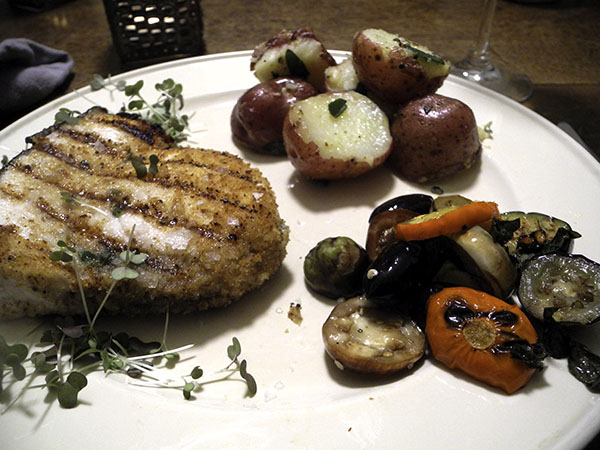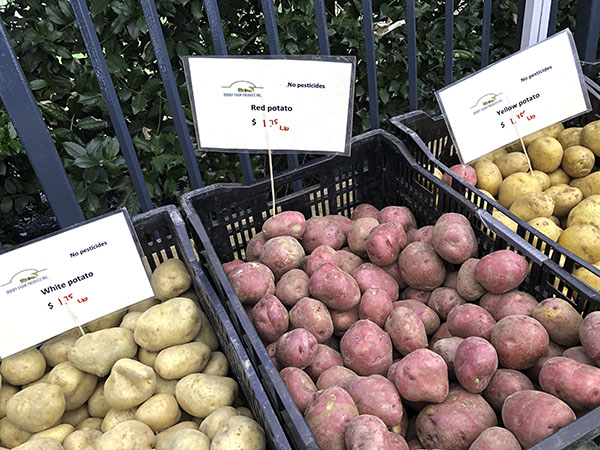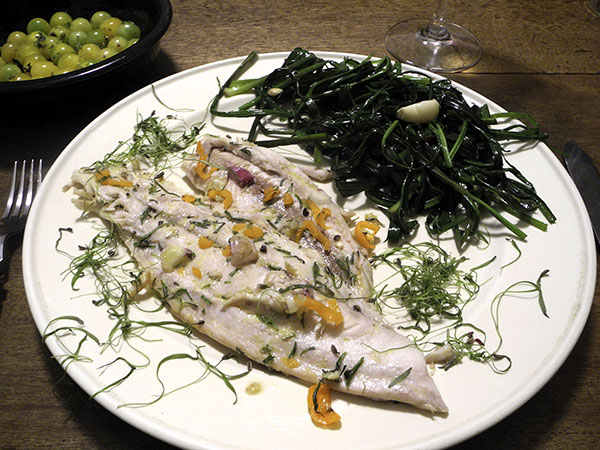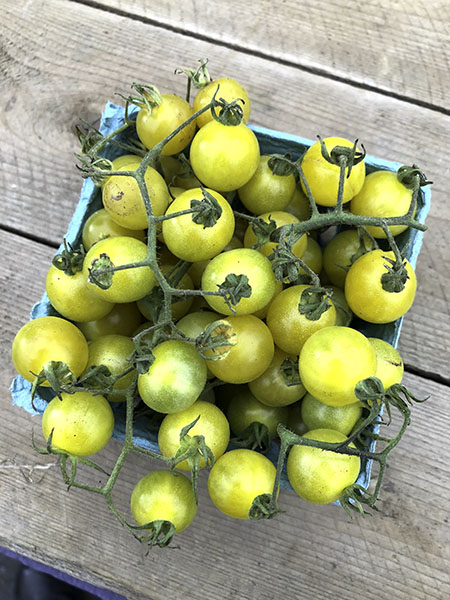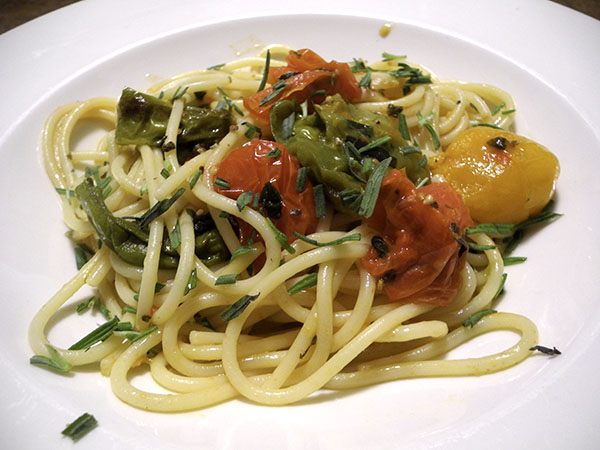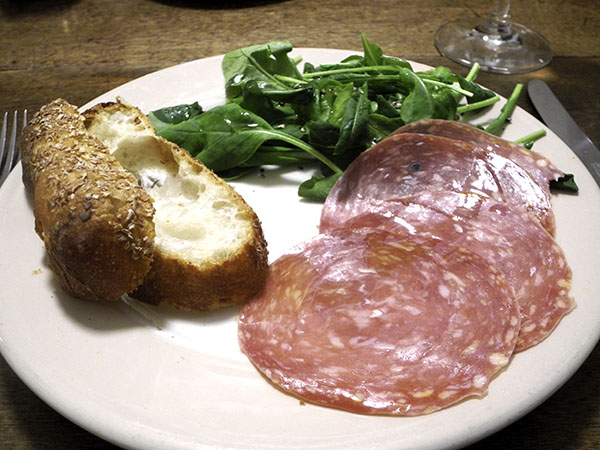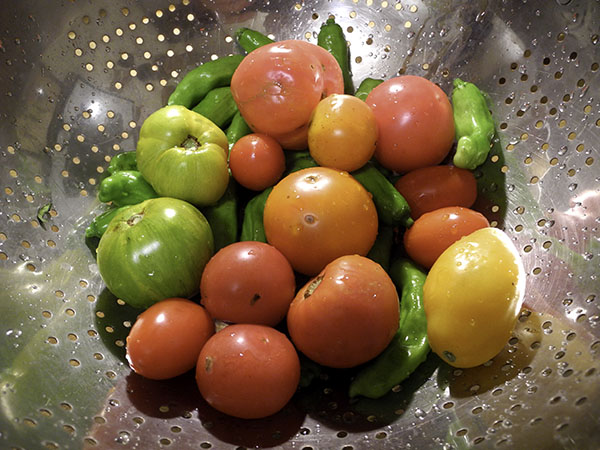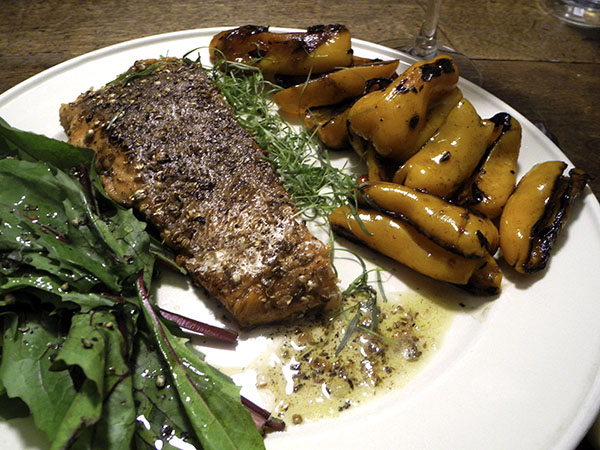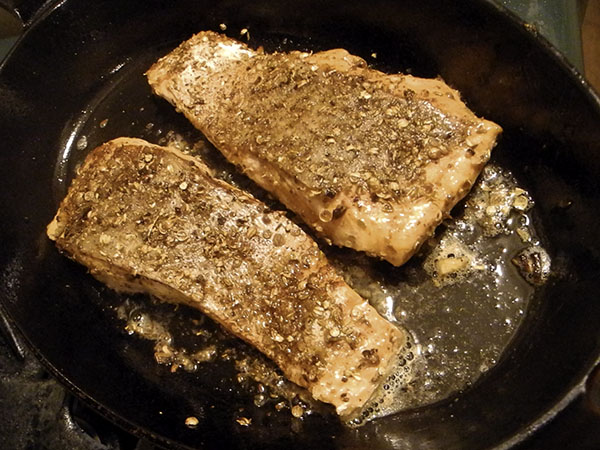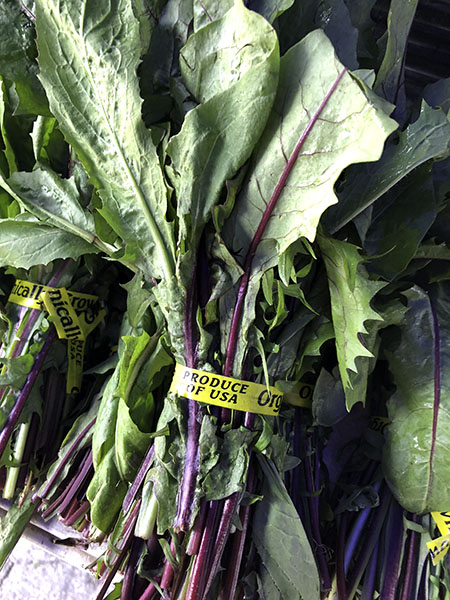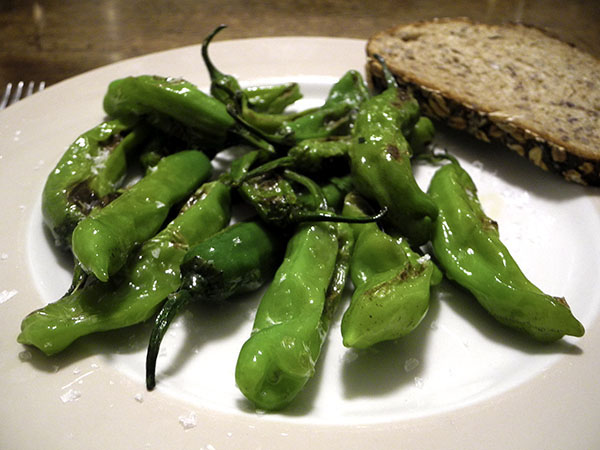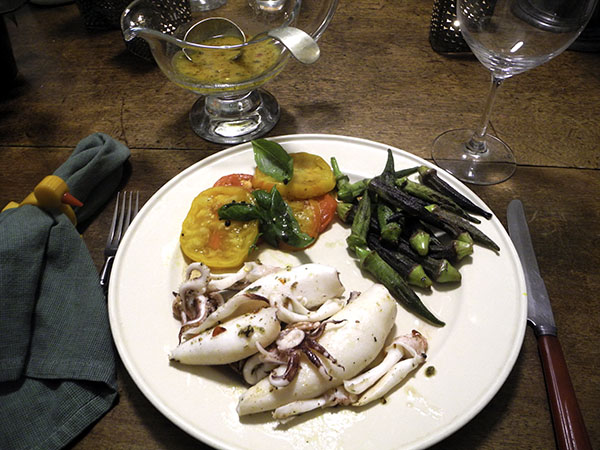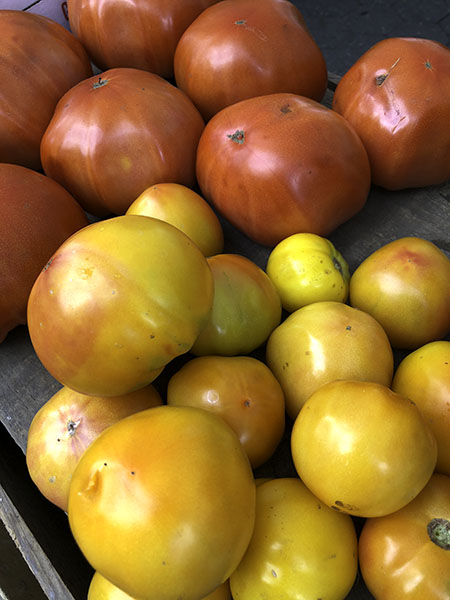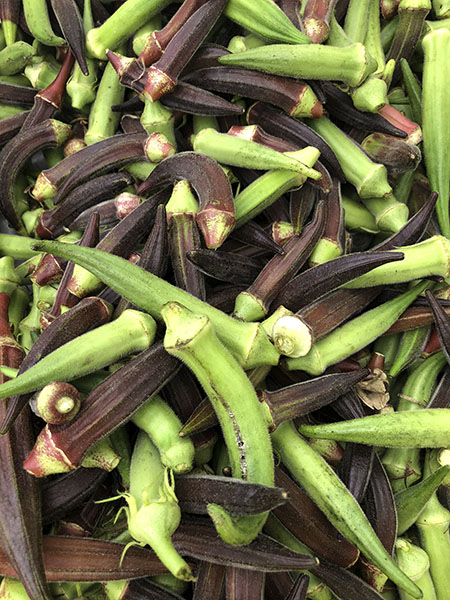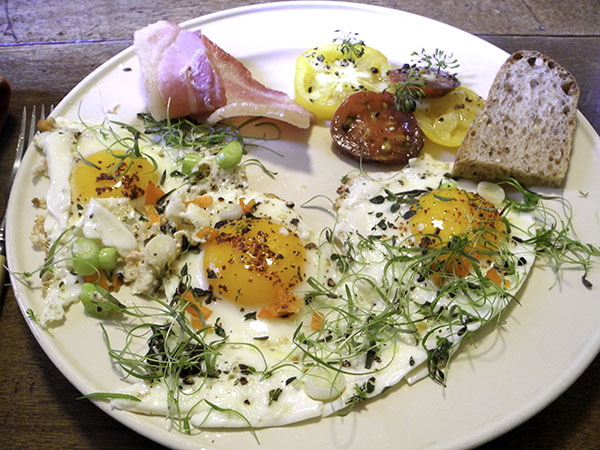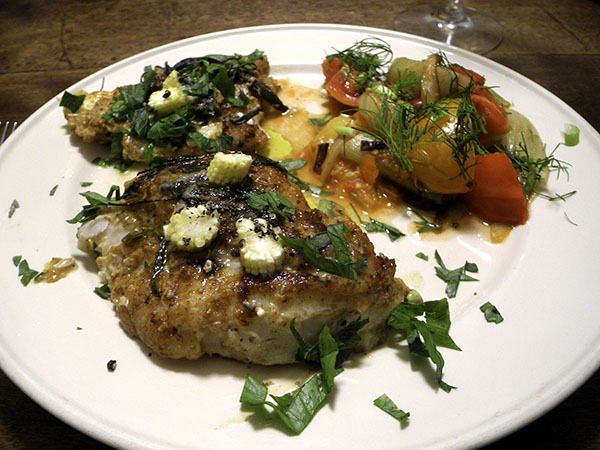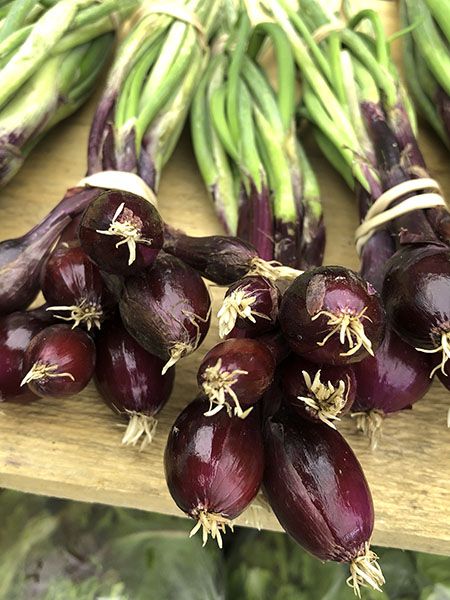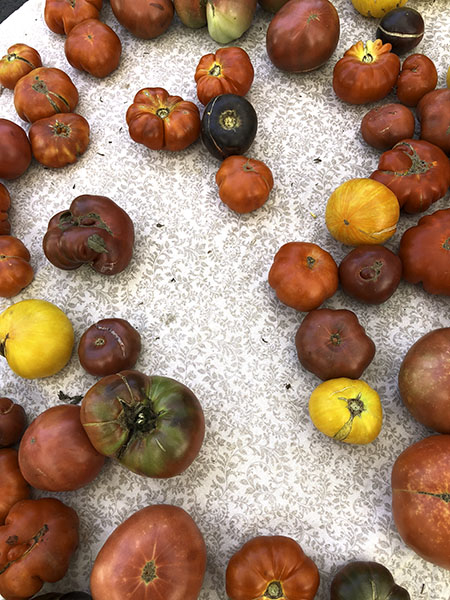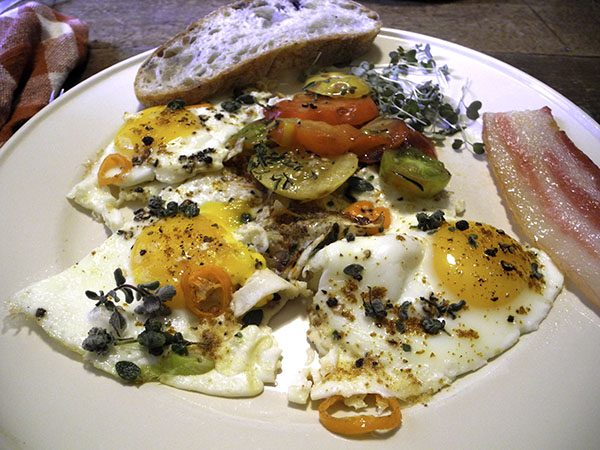
This time at Sunday breakfast the bread was something of a star. As much as I like bread of any kind, with so much else going on on these hearty midday plates (serving as both breakfast and lunch), the bread is usually in a supporting role at best.
The loaf of Orwashers ‘Moroccan olive bread’ (rustic wheat, white flours; black, green, and Kalamata olives, and ‘Moroccan spices”) may be a new product for the bakery. Because of the olives, thinking that they might limit its general usefulness, I might not have made it my first choice at the 23rd Street greenmarket that morning, but there had been something of a run on the rest of their stock that day.
In the end, it was so good that when we sliced into it the next day, we decided not to toast it.
- besides the bread, there were 3 rashers of thick bacon and 6 fresh eggs from Millport Dairy Farm; a little sliced young red onion from Berried Treasures Farm and a bit of fresh habanada pepper from Oak Grove Plantation, both softened inside the pan before the eggs were broken into it; Maldon salt, freshly-ground black pepper, a dry seasoning called L’ekama from Ron & Leetal Arazi’s New York Shuk, and fresh oregano from Norwich Meadows Farm, all 4 scattered on top of the eggs; 3 differently-colored small heirloom tomatoes from Berried Treasures Farm topped with fresh summer savory from Stokes Farm; and a garnish of a bit of red micro mustard from Two Guys from Woodbridge
- the music was the album, ‘Messiaen: Les corps glorieux & Other Works for Organ’, with Kevin Bowyer playing the organ of the Glasgow University Chapel
